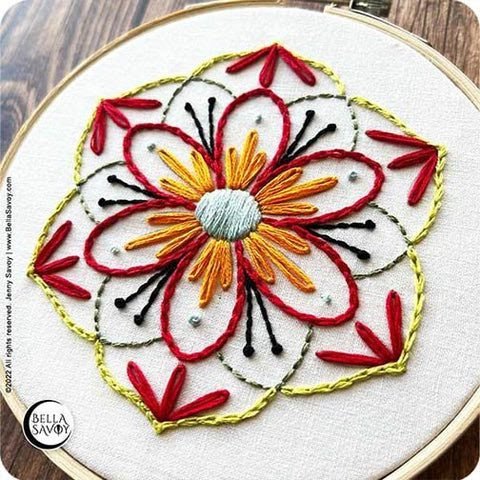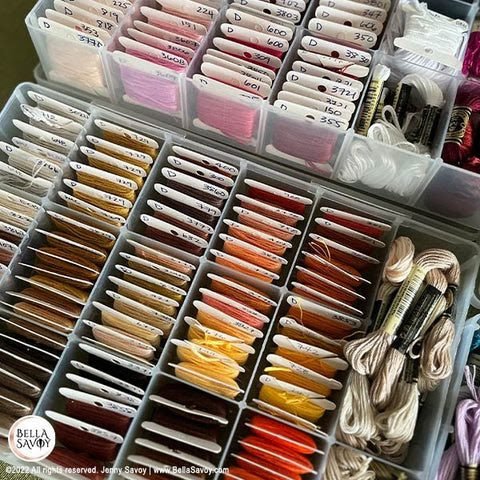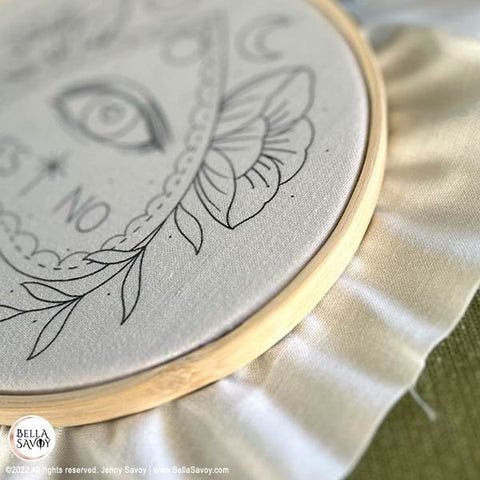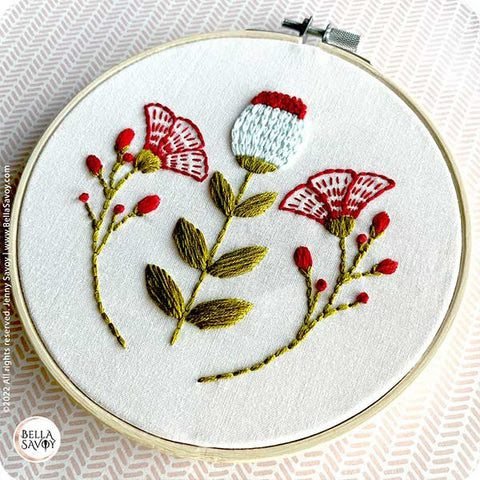
🖤 These must have embroidery supplies are all you need to get started, and the best part is that they’re both affordable and easy to find. Whether you’re stitching at home or on the go, embroidery tools are small, lightweight, and easy to carry—perfect for crafting whenever inspiration strikes. They also make wonderful little gifts for creative friends!
To help you begin, I’ve put together a simple list of essential embroidery supplies, along with a free pattern to get you started. Most of these items can be found at Amazon, Michaels, or specialty shops like DMC. I’ve also included a few helpful tips to make the process even smoother.
Embroidery is such a rewarding craft, offering a relaxing way to unwind while creating something beautiful. Whether you’re adding personal touches to fabric, designing wall art, or stitching gifts for loved ones, having the right tools will make all the difference. With just a few simple embroidery supplies, you’ll be ready to explore endless creative possibilities!
9 Hand Embroidery Supplies List
- Embroidery hoop
- Embroidery needles
- Embroidery floss
- Embroidery pattern
- Fabric
- Scissors
- Transfer material
- Good source of light
- Thread organizer
Embroidery Hoops

Embroidery hoops come in a variety of sizes and are usually circular, oval, or rectangular in shape. The most common is circular.
I started off with a 5″ hoop and would recommend starting there. A 5 or 6 inch hoop is pretty comfortable to hold. Anything larger may be a bit clunky to handle which can tire out your hands if you aren’t used to it.
To learn how to hoop fabric, check out my tutorial.
Embroidery Needles
Among your collection of hand embroidery supplies you will definitely need some embroidery needles. Just like the hoops, embroidery needles (aka crewel) also come in a variety of sizes. There are also several types of needles (such as tapestry, chenille, & quilting) and which you use really depends on the fabric & thread you’re using. But for now, we’re going to focus simply on embroidery needles.

What you’ll want to know as you choose your needle is that they are assigned a number to indicate size. The higher the number the smaller the eye & thinner the needle. The lower the number the larger the eye & thicker the needle. I started off with DMC needles, size 7 but found the eye was just a wee too small for my liking so now I mainly use a size 6 which is my preference.
I recommend purchasing a few different sizes so you can try them out for yourself. Also keep in mind that many of these needles are nickel plated steel so if you’re allergic to nickel DMC also offers gold plated needles.
Embroidery Floss
Next on the list of embroidery supplies is embroidery floss. You can find lots of embroidery floss in bulk on Amazon which will provide you with a variety of colors to play with at a pretty inexpensive price. They’re great for when you’re first starting out and learning.

It’s what I started with and still sometimes use but I’ve also upgraded to a higher quality floss from DMC. They have a nicer sheen, vibrant colors, and are easy to handle. If done right you rarely get any tangles. They’re a bit more expensive but still affordable and worth it.
I tend to pick my DMC floss from Michaels since they always have coupons. You don’t save much but it will add up when you see all the gorgeous colors and realize you have to have them all!
Stop by my post on embroidery thread basics to learn more!
Embroidery Pattern
Obviously, you’ll need an embroidery pattern like this one:

You can download the free pattern and even stitch along on my Mandala blog post.
You can also find more patterns online on Pinterest, Etsy, and also in my new Etsy shop.
Fabric

Another embroidery supply you’ll need is fabric. You can use almost any fabric as long as it isn’t stretchy or too thick, and you can even use paper! As a beginner try natural linen fabric which is one of my favorite materials to work with. You can find fabric geared towards needlework but whatever you choose doesn’t have to be specifically for that.
Embroidery Scissors
You’ll also need a sharp pair of scissors. I started off with a pair of regular scissors which are good for starting off, but you’ll soon want to grab a pair of embroidery scissors which will reach into tight spaces a whole lot easier!

I happened to have a pair of cuticle scissors which I bought years ago, never used, and forgot about. I hadn’t purchased embroidery scissors just yet so I remembered them, pulled them out, and they turned out to be perfect for the job!
So if you can use cuticle scissors to do the same job as embroidery scissors which are sharper, in my opinion.y you tell your story online can make all the difference.
Transfer Materials
Next on the embroidery supplies is transfer material. There are several ways to go about transferring patterns. If you just want to keep things simple all you’ll need is your printed pattern, a light source such as a window or light box, tape, and a thin pen. Just tape your printed pattern to the back of your fabric, hold it up to your light source, and trace.
Printable transfer paper is another option. Just print your image onto the transfer paper and stick it onto your fabric. You might have to clean your needle once in awhile as this can make your needle a little sticky so keep that in mind. When you’re finished stitching you just wash it away!the way you tell your story online can make all the difference.
Take a peek at my post to learn how to transfer your pattern so you can decide which method is right for you. This will help you decide what material you will want to grab.
Light Source
A good source of light is a must if you want to save your eyes. Even if you feel you can see what you’re doing just consider how much strain you’ll put your eyes through and how it can affect your vision in the long run. I sometimes use a large magnifying glass with a small light and I love this little guy! I use my OttLite magnifying glass whenever I need a little extra light. It has an adjustable strap that is worn around your neck and the legs stand on your chest. It’s pretty comfortable and if I need to get up I don’t need to remove it. I can just let it hang.
Thread Organizer
Eventually, you’re going to want a way to keep things organized. You’ll have handfuls of embroidery floss, needles, and scissors which will need a home. A shoe box can work temporarily but if your supply inventory outgrows it you’ll want to invest in some floss bobbins and a container and possibly a sewing basket. It will be much easier to find the color thread you need if they’re organized.

Once you have your essential hand embroidery supplies ready, be sure to explore other posts for more tutorials.
Disclaimer: This post may contain affiliate links and I may earn a commission from qualifying purchases at no additional cost to you.





